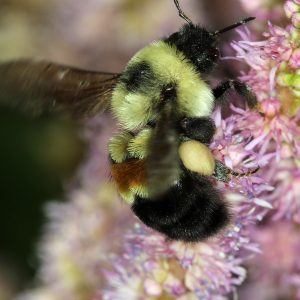Alexis Watkins: Conservation Education Intern, Lime Creek Nature Center

Most of us know of at least one endangered species whether it be the Asian Elephant, the Snow Leopard, or countless others, but how many people know an endangered species from Iowa? There are several species here in Iowa that need our help. We can all make a difference and that starts with education!
There is a difference between an animal being federally endangered and being state endangered. There is also a difference between endangered and threatened. According the United States Geological Survey (USGS), “’Endangered’ means a species is in danger of extinction throughout all or a significant portion of its range. ‘Threatened’ means a species is likely to become endangered within the foreseeable future”. These are legal terms under the Endangered Species Act (ESA).
Since state and federal are not the same, species can have a differing endangered status. For a species to be federally listed as Endangered, the species habitat and population must have a status review by a reputable federal source, such as: the U.S. Fish and Wildlife Service (USFWS), the National Oceanic and Atmospheric Administration (NOAA), or the National Marine Fisheries Service (NMFS). State listed species are typically determined by agencies within that state. For Iowa that is the Iowa Department of Natural Resources (IDNR).
The Higgins’ Eye Pearly Mussel (Lampsilis higginsii) is an example of a federally listed endangered species. This mussel lives in large rivers with deep water. Largemouth bass, smallmouth bass, yellow perch, and walleye are host species for larvae. Larvae are released by the female and they must attach and be taken up by the gills or fins of the host fish before the larvae can continue to develop.
The Higgins’ Eye is found in the Upper Mississippi River. Historically, this species also occurred in the Cedar, Wapsipinicon, and Iowa Rivers, however, it can no longer be found there.
Now why should we care about this little creature? This mussel is an important indicator of water quality! Higgins’ Eye Pearly Mussels only live in very clean water. The decline of river water quality corresponds to the decline of this species’ populations. Habitat alterations and host species populations also have an impact on the species’ survival.

The Rusty Patched Bumble Bee (Bombus affinis) is another federally listed endangered species. It is native in the east and parts of the Midwest of the United States. They can typically be found near or within woodlands.
The amount of available pollen is directly correlated to the population of the Rusty Patched Bumble Bee. This species needs flowers to be closer to its’ nesting sites, because it doesn’t forage far from the hive. Threats to this species include pathogens, habitat loss, pesticides, and climate change.
We need to protect our buzzing friends because a majority of our food can’t be grow without them! One way you can help is to plant a pollinator garden with colorful flowers with sweet nectar and pollen for these little guys. It’s pretty and the pollinators will thank you.
The federally listed Indian Bat (Myotis sodalis) is an important species because it helps control pests like mosquitoes and other small bugs that try to ruin your camping. They can eat up to half of their body weight in insects each night! This bat uses forests as summer habitat and caves for hibernation; they are native from the east coast to the Midwest.
Hibernation is essential to this species to survive the cold winter months. Bats require cool, humid caves with a temperature between 30 and 50 degrees Fahrenheit. Bats store energy as fat for hibernation and if temperatures rise or if the bats are disturbed during hibernation, more energy will be used, and the bat may starve. Human disturbance is the major threat to this species. White-nose syndrome, commercialization of caves, loss of summer habitat, and pesticides are other threats.
A state listed endangered species is the Blanding’s Turtle (Emydoidea blandingii) Blanding’s turtles are native across the Midwest and live primarily in wetlands. They are mobile and move between wetlands due to their nesting grounds being far away from water. Unfortunately, they leave behind a trail of their rather strong scent which makes them quite vulnerable to predation by foxes and raccoons. They eat mostly small animals and crayfish and occasionally plants and seeds.
Protection and reestablishment of wetland habitat would greatly help Blanding’s turtles. Elimination of commercial collection and reduction of roadside mortality would increase their survival as well.
Those are only a few of Iowa’s endangered species. For more information on endangered species and how to help them, check out the U.S. Fish and Wildlife Service website (www.fws.gov) and the Iowa DNR website (www.iowadnr.gov).








